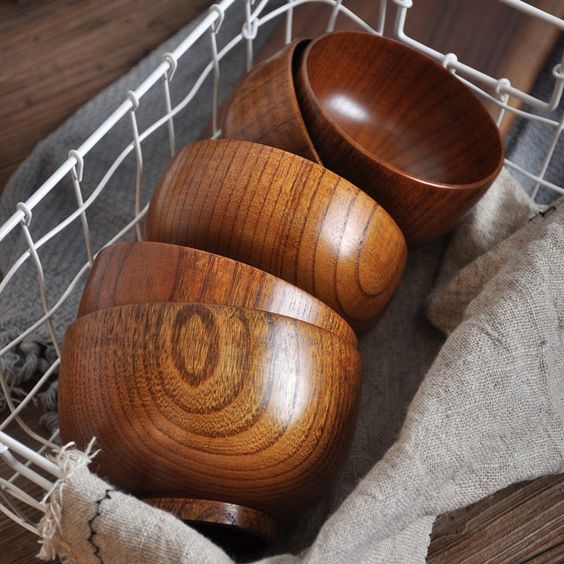Introduction:
In the ever-evolving landscape of kitchenware, certain items stand the test of time, embodying both tradition and sophistication. Wooden bowls, with their natural charm and versatility, have been a staple in kitchens for centuries. This blog post delves into the timeless allure of wooden bowls, exploring their history, craftsmanship, unique characteristics, and the sustainable appeal that continues to make them a beloved choice in culinary spaces.
A Glimpse into History:
Wooden bowls trace their roots back to ancient times when early civilizations relied on the bounty of nature for their culinary needs. Crafted from a variety of wood types, these bowls were not merely functional vessels but also symbolic artifacts, often passed down through generations. Today, the tradition of using wooden bowls endures, connecting us to our culinary heritage while adding a touch of warmth to our modern kitchens.
Craftsmanship and Artistry:
The creation of wooden bowls is a true art form, requiring skill, precision, and an appreciation for the unique qualities of each piece of wood. Craftsmen carefully select wood based on its grain pattern, color, and durability. Techniques such as turning, carving, and sanding transform raw wood into exquisite bowls, each a testament to the artisan’s dedication to their craft. The result is not just a kitchen utensil but a work of functional art that elevates the dining experience.
Versatility in Design:
One of the distinctive features of wooden bowls is their versatility in design. From classic round bowls to asymmetrical and artistic shapes, there is a wooden bowl to suit every taste and style. Some bowls showcase the natural beauty of the wood grain, while others are adorned with intricate patterns or decorative accents. The wide range of designs allows for a seamless integration into diverse kitchen aesthetics, from rustic farmhouse kitchens to sleek, modern spaces.
The Warmth of Wooden Bowls:
Wooden bowls bring a unique warmth and organic feel to the dining table. Unlike their cold and impersonal counterparts, such as metal or glass, wooden bowls add a touch of coziness to any meal. The natural texture of wood enhances the sensory experience, creating a connection between the diner and the meal served. Beyond their functional purpose, wooden bowls contribute to the overall ambiance of a dining space.
Sustainability and Eco-Friendliness:
In an era where sustainability is at the forefront of consumer choices, wooden bowls shine as eco-friendly alternatives. Responsibly sourced and crafted from renewable materials, these bowls offer a greener option for those who seek to minimize their environmental impact. Additionally, the longevity of wooden bowls ensures they can be cherished for years, reducing the need for frequent replacements associated with disposable or less durable materials.
Caring for Wooden Bowls:
To maintain the beauty and longevity of wooden bowls, proper care is essential. This section of the blog can provide practical tips on cleaning, seasoning, and preserving the wood, ensuring that readers can enjoy the timeless allure of their wooden bowls for years to come.
Conclusion:
In a world of ever-changing kitchen trends, wooden bowls stand as a testament to the enduring appeal of natural materials and expert craftsmanship. Beyond their functionality, these culinary companions bring a sense of tradition, warmth, and sustainability to our dining experiences. Whether passed down through generations or newly acquired, a wooden bowl is not just a utensil; it’s a piece of history and a symbol of the enduring connection between nature and the art of dining.

